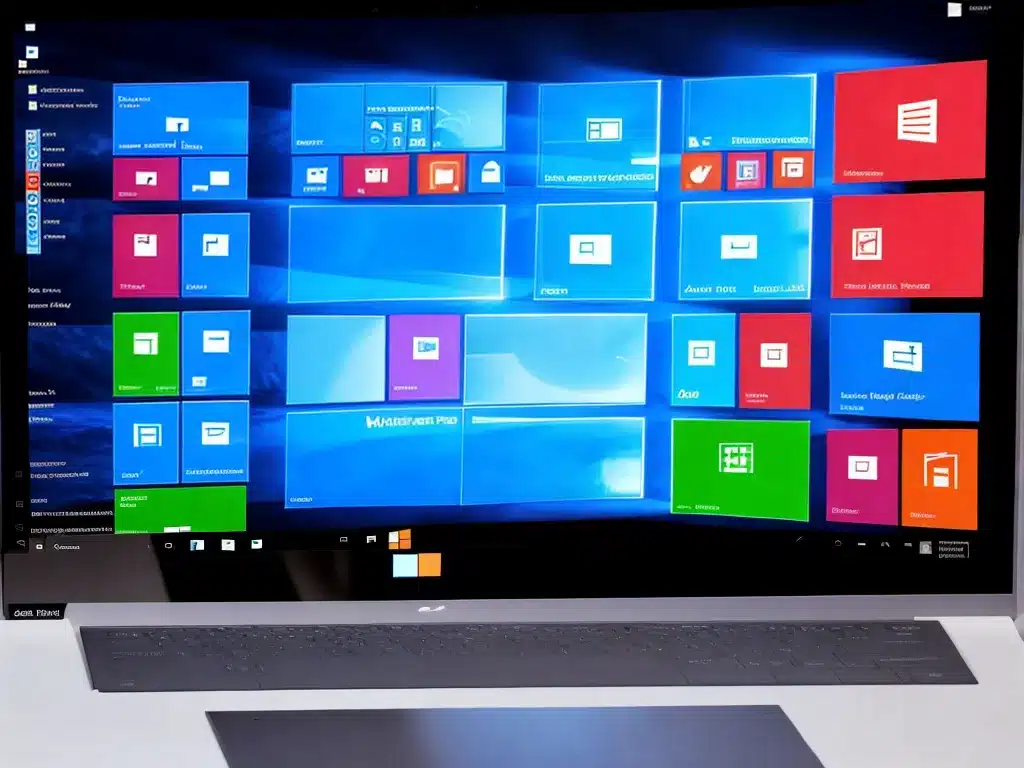
Introduction
With the release of Windows 11 in 2021, speculation has already begun around what Microsoft has in store for the future of its operating system. Windows 12 is still likely years away, but there are some educated guesses we can make about what to expect from this future release based on Microsoft’s recent trends and developments. As a Windows enthusiast, I’ll share everything I know so far about the potential features, changes, release timeline, and more for Windows 12.
Timeline for Release
Microsoft has historically released new versions of Windows every 2-3 years. Windows 10 launched in 2015, while Windows 11 arrived in 2021 – a gap of 6 years. This longer gap was likely due to significant under-the-hood changes with Windows 11. With these major updates out of the way, I expect Microsoft will aim to release Windows 12 in 2024 or 2025.
Of course, this is only speculation at this point. Microsoft may speed up or slow down the cadence depending on market factors and tech advancements. I’ll be keeping a close eye on any rumors from Microsoft insiders on a more solid release target for Windows 12 as we move through 2023.
User Interface Changes
Windows 11 introduced a dramatically redesigned interface with a centered Start menu and Taskbar, rounded corners on windows, and more. It was a major visual overhaul. For Windows 12, I expect the changes to be a bit more iterative.
Microsoft will likely continue improving upon Fluent Design. We should see smoother animations, transparency effects, and blur. I hope they add more customization options for the Start menu and Taskbar locations – these were sorely lacking in Windows 11.
Overall, I don’t foresee radical changes to the core UI – just refinements building upon Windows 11’s look and feel.
New Features
Here are some of the major new features I anticipate Microsoft could introduce in Windows 12:
- Enhanced AI integration – Further assistance through AI in apps like Office and built-in search.
- Multitasking improvements – Better window snapping, virtual desktops, etc.
- Gaming enhancements – Leveraging the Xbox platform, possible game streaming.
- Security updates – New protections against modern threats like ransomware.
- Cloud connectivity – Deeper OneDrive, Office 365, and Azure integration.
Microsoft has invested heavily in cloud, AI, gaming, and security – Windows 12 will likely showcase these strengths. I also hope to see productivity improvements for power users.
The challenge will be balancing new features against system resource usage – Windows 11 already has high minimum requirements. So these additions need to avoid bloating the OS.
Windows Core OS?
There have been rumors for years that Microsoft is developing a modular Windows Core OS. Rather than monolithic Windows releases every few years, Core OS would allow dynamic updating of OS components through cloud connectivity.
It’s not clear if or when Microsoft may be ready to deliver on this vision. The scope is tremendously complex – transitioning an ecosystem of third-party apps and devices would take massive coordination.
If viable, I’d expect to first see Core OS concepts woven into Windows 12 or 13 before fully committing to it. The technology may not be ready for mainstream adoption yet, but it represents an intriguing potential future.
Conclusion
While it’s still early, I’m excited to see where Microsoft takes Windows in the coming years. I’ll be watching closely for leaks as we get closer to the launch of Windows 12. The operating system faces competition from ChromeOS and MacOS, so innovation is vital. I’m optimistic Windows 12 can build upon Windows 11 to deliver a refined, empowering computing experience when it arrives in the 2024-2025 timeframe.












